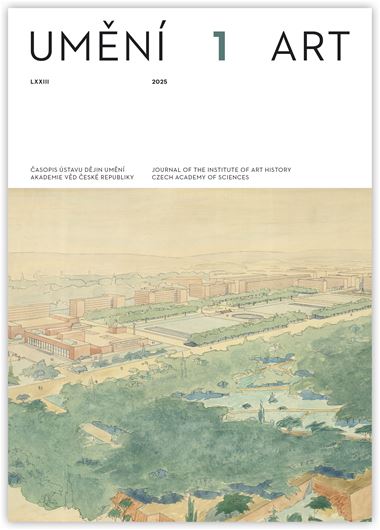Kateřina Kubínová
Murals in the Church of Our Lady on Karlštejn before 1898 according to Written and Iconographic Sources
This study aims to reconstruct the history of the paintings in the Chapel of the Virgin Mary at Karlštejn Castle from the time of the Rudolphine reconstruction up until 1897, when restoration was undertaken by Jan Heřman. Of fundamental importance is a 1599 report by regional officials detailing substantial alterations: the destruction of large parts of the murals due to the demolition of the northern partition; the creation of an oriel in the southern wall; and repairs to the ceiling and roof. At that time, the wall paintings were likely covered with limewash and partially repainted within their original contours. More detailed records emerge only from the late 18th century, when interest in the castle’s decoration was rekindled by the mistaken belief that the murals were oil paintings. Descriptions of the interiors began to appear in numerous contemporary texts. A turning point was the 1824 account by Alois Primisser, the first to identify many of the apocalyptic scenes. His text was later drawn on by many authors, including Karel Vladislav Zap. These writings also record two ceiling replacements that damaged the murals: the first occurred between 1816–1819, with no regard paid to preservation; and the second in 1855, when the paintings received inadequate protection. A report by Jan Erazim Vocel from 1857 not only documents the damage, but also suggests how the paintings might be restored. In the mid-1860s, when a decision was being reached regarding repairs to the castle, August Ambros published an impassioned plea to save the deteriorating monument. The text mentions amateur painter Antonín Dobroslav Výšek, who took it upon himself to clean the scenes featuring angelic choirs in the 1850s and exposed mediaeval paintings in a window niche in the 1860s. He also produced a set of somewhat crude coloured drawings of the Karlštejn paintings. Far more accurate are the drawings made by Carl Jobst during the detailed 1866 survey of the castle led by Josef Mocker. These faithfully depict the state of the paintings at that time, including dimensions, colours and specific details.
Author's email:
kubinova@udu.cas.cz
DOI: https://doi.org/10.54759/ART-2025-0102
Full-text in the Digital Library of the Czech Academy of Sciences:
https://kramerius.lib.cas.cz/uuid/uuid:142d1cf9-883c-4c2e-9376-e5cc6ee4cc7a_1
< back

